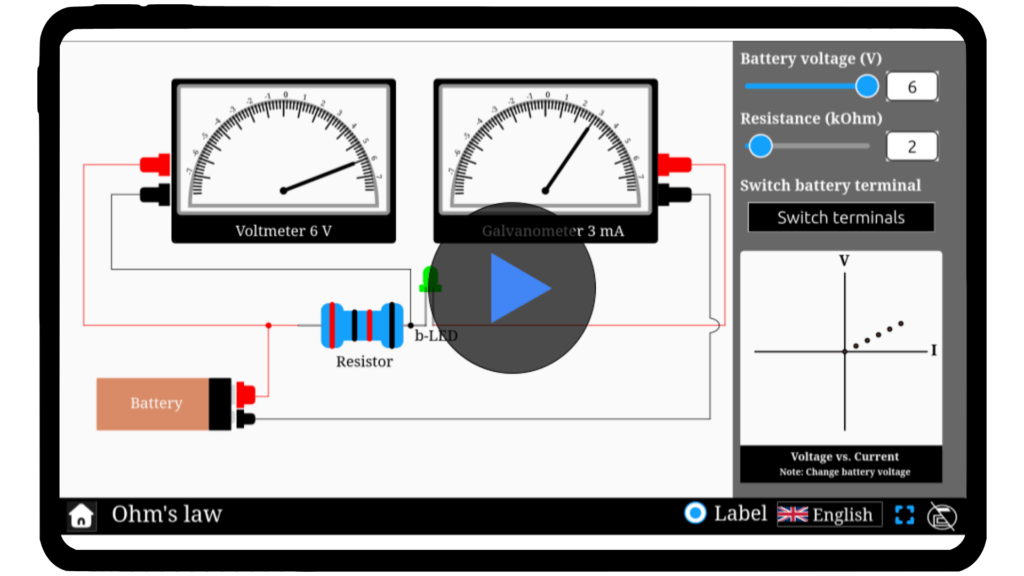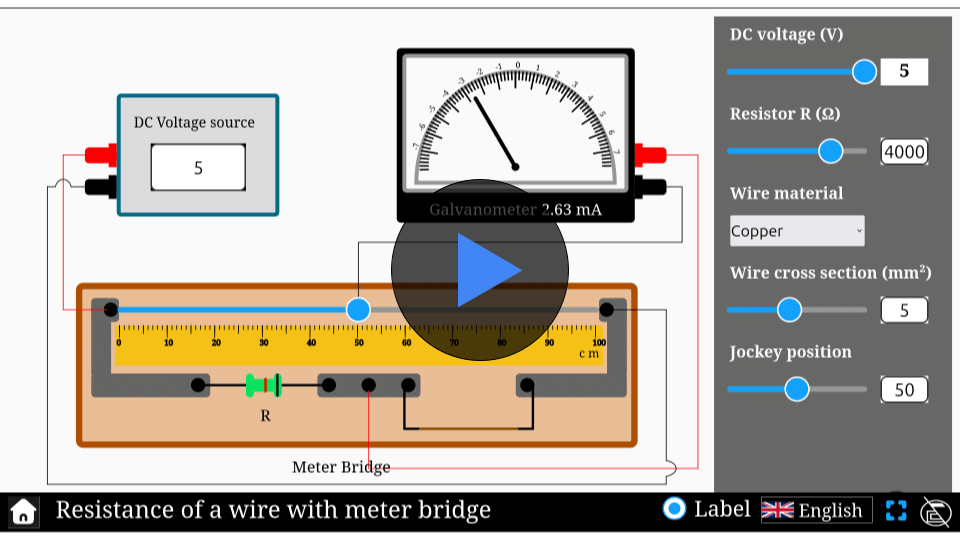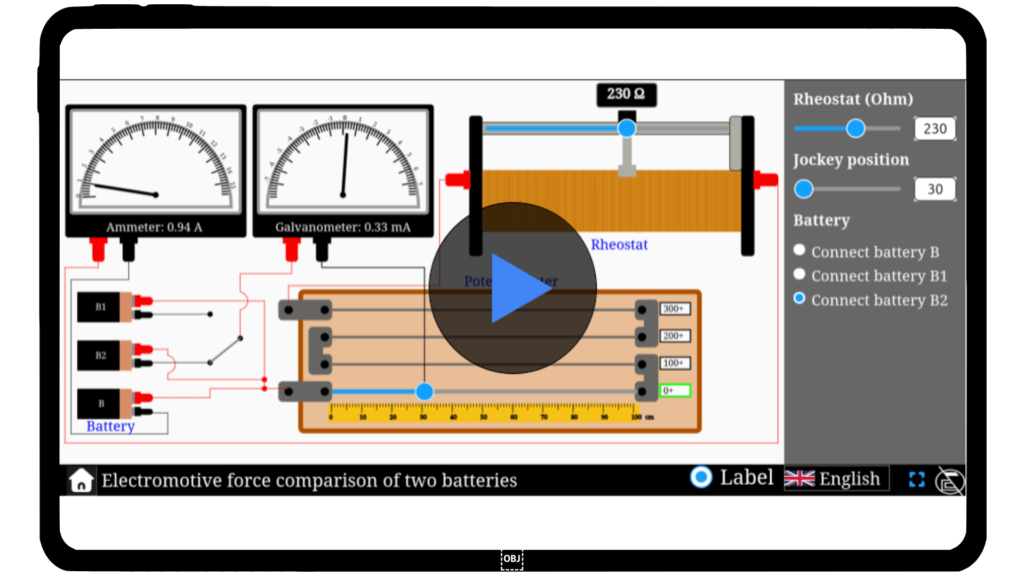I-V characteristic of ohmic resistor simulator
Explore Ohm’s Law interactively: visualize the relationship between voltage and current in an ohmic resistor with our engaging simulator.
Ohm's law
Electricity is at the heart of modern technology, powering everything from gadgets to machinery. But how does voltage relate to current in a simple resistor? Dive into the world of Ohm’s Law with our interactive IV Characteristic Simulator. Adjust the voltage, explore the current response, and witness the linear relationship in action. Understand the behavior of an ohmic resistor and see Ohm’s Law come to life — start experimenting today!
\( V = I R
\)
Mathematical description
where:
- \( V \) is the voltage across conductor
- \( I \) is the current flowing through conductor
- \( R \) is the resistance of the conductor
FAQs on I-V characteristic of ohmic resistor simulator
Qus 1. What is the I-V characteristic of an ohmic resistor?
An ohmic resistor shows a linear I-V graph, meaning current increases proportionally with voltage, following Ohm’s Law (V = IR).
Qus 2. Why is the I-V graph of an ohmic resistor a straight line?
The straight line represents a constant resistance, where the ratio of voltage to current remains the same at all points.
Qus 3. What does the slope of the I-V curve represent?
The slope of the I-V graph (V/I) gives the resistance (R) of the resistor.
Qus 4. What happens to the I-V curve if resistance changes?
If resistance increases, the slope of the line becomes steeper; if resistance decreases, the line becomes flatter.
Qus 5. Can an I-V simulator show non-ohmic behavior?
Yes, simulators can also model non-linear I-V curves for non-ohmic components like diodes and filament bulbs.




